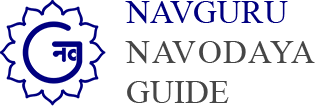The JNV Class 11 Exam (Lateral Entry Test) is a highly sought-after examination for students seeking admission to Class 11 in Jawahar Navodaya Vidyalayas (JNVs) across India. JNVs are co-educational, residential schools under the purview of Navodaya Vidyalaya Samiti, an autonomous organisation under the Ministry of Education, Government of India.
These schools aim to provide quality education to talented rural children and foster their overall development. The lateral entry test opens doors for students to join JNVs in Class 11 and continue their academic journey in an exceptional learning environment.
Centre for Examination: JNV Class 11 Exam
Each candidate appearing for the JNV Class 11 Exam (Lateral Entry Test) is assigned an examination centre indicated on the Admit Card. It is imperative for candidates to appear for the test at the allotted centre; requests for centre changes are not entertained. Candidates must carry their Admit Card, which can be downloaded from the official website of Navodaya Vidyalaya Samiti (NVS) at www.navodaya.gov.in through the application portal.
Additionally, candidates are required to bring a valid identification document issued by any Government Authority for verification purposes. The invigilator at the examination centre will verify the candidate’s photo on the Admit Card.
Medium of the Question Paper
The JNV Class 11 Exam (Lateral Entry Test) question paper is bilingual and available in both English and Hindi. This ensures that candidates from diverse linguistic backgrounds can comfortably attempt the examination.
Composition of the Test: JNV Class 11 Exam
The selection test consists of five sections, namely, Mental Ability, English, Science, Social Science, and Mathematics. The duration of the test is two and a half hours, from 11:00 am to 01:30 pm.
Each section contains 20 objective-type questions, making a total of 100 questions for 100 marks. To maintain fairness and accuracy, a single test booklet comprising all five sections is provided to each candidate.
The test schedule for each section is as follows:
- Mental Ability: 20 questions, 20 marks, 30 minutes
- English: 20 questions, 20 marks, 30 minutes
- Science: 20 questions, 20 marks, 30 minutes
- Social Science: 20 questions, 20 marks, 30 minutes
- Mathematics: 20 questions, 20 marks, 30 minutes
Candidates who are differently-abled, as per the government norms, are granted an additional 50 minutes for the test.
Method of Recording Answers
Candidates are provided with a separate Optical Mark Recognition (OMR) answer sheet for recording their answers. It is essential to use only a Blue or Black Ball Point Pen to mark the answers on the OMR sheet. Pencils are strictly prohibited.
For each question, there are four probable answers, and candidates must darken the circle corresponding to the chosen answer. Once the circle is darkened, no changes or corrections are allowed.
Striking, using white/correction fluid, or erasing the OMR sheet will result in the disqualification of the answer. Each correct answer carries one mark, and there is no negative marking on the test.
Streams and Selection Criteria
To qualify for admission, candidates must score a minimum of 06 marks out of 20 in each of the five subjects. However, the merit list is prepared based on the marks obtained in different subjects as per the following criteria, out of a ma11mum of 60 marks:
1. Science Stream: Subjects considered for preparing the merit list are Mental Ability, Science, and Mathematics, with a maximum of 60 marks.
2. Commerce Stream: Subjects considered for preparing the merit list are Mental Ability, Social Science, and Mathematics, with a maximum of 60 marks.
3. Humanities Stream: Subjects considered for preparing the merit list are Mental Ability, Social Science, and one subject out of History, Geography, and Economics, with the highest marks, with a ma11mum of 60 marks.
4. Vocational Stream: Subjects considered for preparing the merit list are Mental Ability and two subjects with the highest marks out of the remaining four subjects, with a maximum of 60 marks.
When selecting candidates provisionally, the overall cut-off out of 60 marks and sectional cutoffs are taken into consideration. The cutoff scores for different categories are as follows:
- General/OBC Boys: 21
- General/OBC Girls: 20
- SC/ST/Divyang Candidates: 18
In case of tie-in marks out of 60, the following criteria are followed in sequence:
a) Preference is given to the candidate who has scored more marks out of 40 in two subjects, excluding the Mental Ability score.
b) If the tie still exists, the candidate who has scored higher marks out of all five subjects, i.e., out of 100, is preferred.
c) If the tie persists, the female candidate is given preference.
d) If the tie is still unresolved, the candidate with a lower age is preferred.
Conclusion
The JNV Class 11 Exam (Lateral Entry Test) provides an opportunity for students to join the prestigious Jawahar Navodaya Vidyalayas and receive a quality education in a nurturing environment. With a well-structured examination pattern and transparent selection criteria, the test ensures fairness and equal opportunities for all candidates. By preparing diligently and performing well on the test, students can embark on a transformative educational journey that opens doors to a brighter future.



